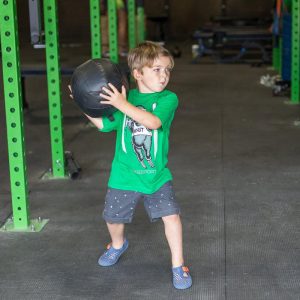As a young strength and conditioning coach, I would read an article or watch a presentation by one of my “big name” industry idols and immediately rush back to my own programs to employ what I had learned.
Sometimes, bam! It was like magic. The little programming secret I had learned from coach X helped transform my ability to help kids. Other times, it was more like, thud! The kids didn’t respond. It appeared unsafe for my training environment. I didn’t have the facilities, program setup, or coaching support required.
Assuming the problem was on my side (a guru would never lead me wrong), I often continued to torpedo my program with these strategies that weren’t really working for me or my athletes, but were apparently the “right” thing to do. After all, I didn’t want to seem like I was out of the loop when talking shop with colleagues. The unfortunate result of this blind faith ranged from athlete and parent disengagement to unnecessary injury.
There definitely are “ideal world” or context-specific youth program strategies that can help improve kids’ performance. In the real world, however, coaches find themselves in vastly different situations with the athletes, facilities, and training environments. When we can be open to trying new things, but become reflective and honest enough to determine what works for us, it optimizes the performance and safety of our athletes.
Take an activity like crawling, for example. I personally tout the benefits of this training activity for nearly every level of athlete. However, in my touting, I may not mention that I primarily use this when I have a smooth indoor training surface. Outdoor synthetic turf gets too hot when the sun is out. Asphalt is out of the question, and poorly maintained real grass can get too muddy, sticky, and allergy-inducing to be a safe, effective surface for this activity.
I only do crawling games when there is ample space because I’ve experienced multiple injuries from fingers getting stepped on when kids are moving in an over-congested area. I have primarily trained in upper-middle-class areas of wealthy Southern California, suggesting that the kids I’ve worked with are less likely to be morbidly obese than those training in more impoverished areas.
If this disclaimer was provided with every strategy a coach shares with the masses, our advice would take the shape of one of those drug commercials with the fast-talking “this drug might kill you” guy at the end. The truth is, within a majority of the context from which I coach and train, my athletes are engaged, parents see the value, and kids safely improve their strength from crawling activities. You may experience something completely different.
Odds are, we’re both right.
Below are some of the alleged “must do” activities and equipment that many love, but I am willing to admit I’ve had either safety or practicality concerns within my own programs, particularly with groups of kids under the age of 8.
Medicine Balls
Gasp! How dare I question one of the original “4 Horsemen” of fitness? Don’t get me wrong, I still use medicine balls with nearly everyone I work with. However, when working with my youngest kids, I’ve developed concerns over the years.
 For one, rebounding medicine balls often rebound too quickly off of the ground or off of walls for this age, resulting in frequent bloody noses and similar mishaps. Tossing balls back and forth hasn’t worked well with this age due to hand/eye coordination challenges and the relatively large size of many balls.
For one, rebounding medicine balls often rebound too quickly off of the ground or off of walls for this age, resulting in frequent bloody noses and similar mishaps. Tossing balls back and forth hasn’t worked well with this age due to hand/eye coordination challenges and the relatively large size of many balls.
Soft-coated balls work better, but I’ve found these to be expensive and with the concrete area I’ve used for training, durability becomes a concern. I’ve also been challenged with balls rolling away or errantly being tossed in the wrong direction, causing tripping and “falling debris” hazards.
For my youngest athletes, I’ve had better success with softer weighted implements, like SandBells® that have similar benefits without the risks of most medicine balls. For rebounding types of activities, I’ll often use playground balls.
Back-pedaling
While it’s obvious we have to train youngsters to be able to move in every direction, I have grown to be extra careful when teaching kids to move backward. This activity requires movement with very little visual feedback. Young children rely almost exclusively on visual feedback, so their balance and spatial orientation are going to be severely compromised.
I’ve witnessed numerous falls and collisions, some resulting in concussions and broken bones when I’ve turned kids loose to do relay races, agility drills, and other activities while moving backward.
I still help children develop this skill, but I have learned to take the following considerations:
- Spend a significant amount of time teaching reverse marches and skips prior to running in this orientation. This includes performing agility drills using these regressions.
- Only perform back-pedaling in an open area where tripping will not result in colliding with other objects or people.
- When running backward, keep distance relatively short, i.e. 10-15 yards
- Never have young children race while running backward, particularly outside of 10-15 yards.
Resistance Tubing with Handles
For many, resistance tubing with handles has proven to be an easily transportable, safe, and effective resistance training method for nearly every age. While I’ve found this to be true with adults and more advanced, body-aware athletes, I have not found it to be true for youngsters.
For one, when training on a field with a group, there must be a fixed anchor to attach the tubing. I’ve found I can’t always depend on this. The elastic nature of the bands is a safety concern for young kids as well. Despite repeatedly sharing instructions and safety expectations, the temptation for kids to test the elastic boundaries of the bands is too great. One mis-handling can result in a band snapping another child. Yes, I have seen a child nearly “put an eye out”.
Even under regular training conditions bands can break under load, particularly when outdoors in the heat. When performing exercises, young children struggle with eccentric control, so the elastic recoil of the bands highlights this disparity. Kids find this “ragdoll” phenomenon entertaining, so they are slow to correct.
I prefer using SandBells® and even medicine balls for resistance training with young children when away from an established weight room environment.
The reason I share the above with you is to show that despite what “others” have said, I myself am challenged with some of the “established” paradigms when it comes to training youth. But, I have found ways and methods that work for me and my athletes in our training environment.
How do you determine if a training tool or program suggestion is truly working for you and the kids you work with, or if you’re merely trying to force square pegs into round holes?
Quickly answer these questions:
- Has your program grown objectively (in participation and profitability) since employing a new strategy?
- Does it improve athlete engagement?
- Does it improve value to parents?
- Has it resulted in more, or fewer injuries during training or game play?
- Does an increase in the amount of cost, administration, and/or time result in improved athletic AND BUSINESS results?
- Do you truly believe in the intended purpose and/or outcome?
- Does it improve the rate and magnitude of results with your athletes without compromising your training culture, business, or other critical factors allowing you to continue to help kids?
- Does it allow you to “be yourself” and connect with kids in the way you feel is the most critical?
- Does it objectively contribute to the longevity of your program and/or training business?
- Is the program model from which the advice comes relevant to yours?
As coaches, it’s essential that we employ programming tools that create the path of least resistance to the greatest magnitude of outcome for our athletes and our business.
These tools can be different for everyone.
 Brett Klika is a youth performance expert and a regular contributor to the IYCA who is passionate about coaching young athletes. He is the creator of the SPIDERfit Kids youth training program and has run successful youth fitness programs all over the country. Brett is an international speaker whose passion for youth fitness has helped thousands of people learn how to create exceptional training experiences for young athletes.
Brett Klika is a youth performance expert and a regular contributor to the IYCA who is passionate about coaching young athletes. He is the creator of the SPIDERfit Kids youth training program and has run successful youth fitness programs all over the country. Brett is an international speaker whose passion for youth fitness has helped thousands of people learn how to create exceptional training experiences for young athletes.
If you want to be better at coaching young athletes, the IYCA Youth Fitness Specialist certification is the industry gold-standard for youth fitness and sports performance. Click on the image below to learn more about the YFS1 certification program.

